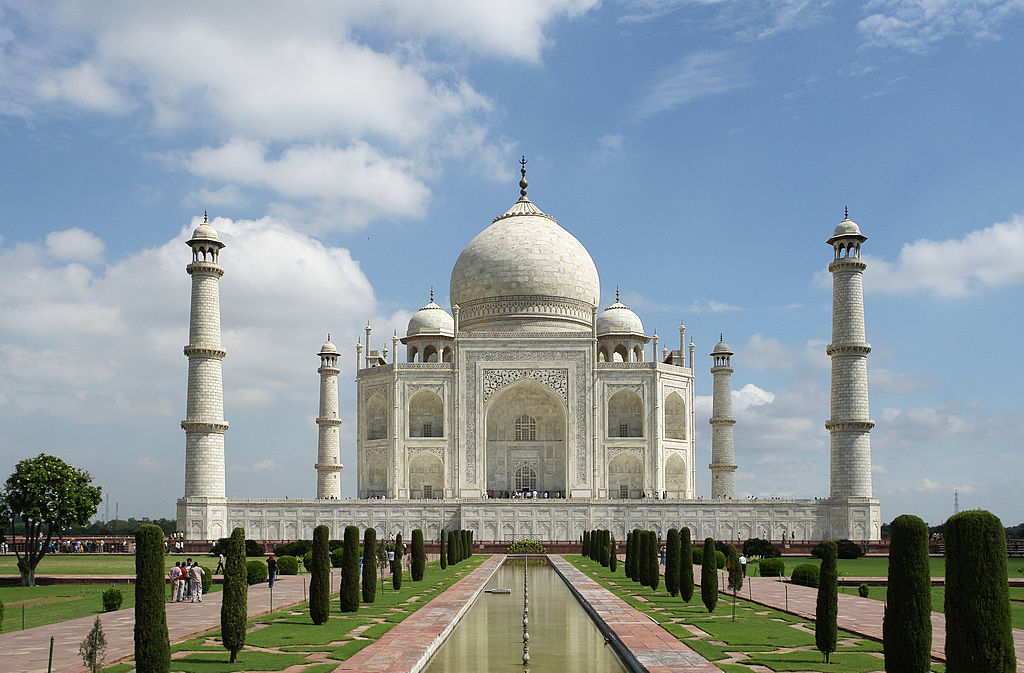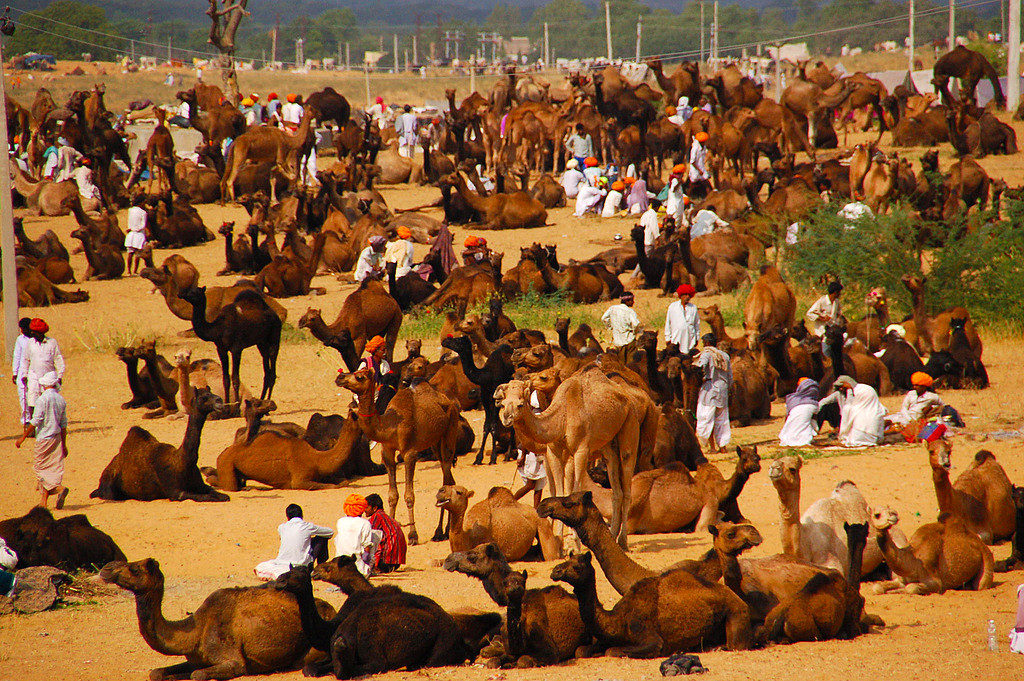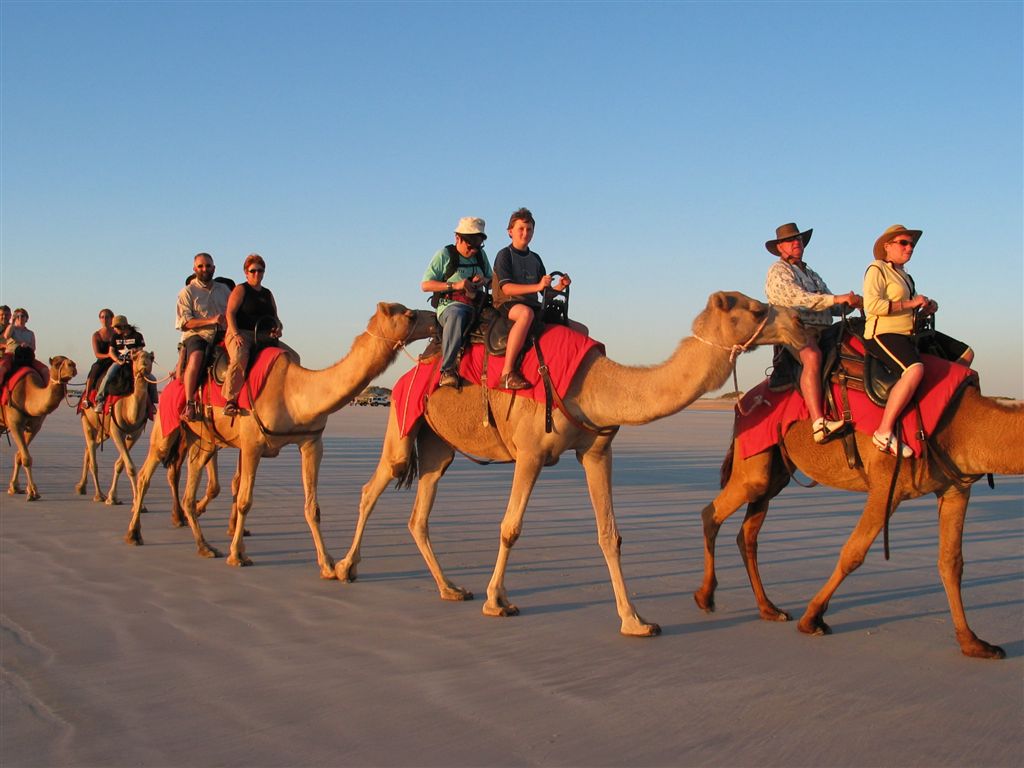
Rajasthan Camel Safari
Camel Safari, India Travel PackageIn the Thar the camel’s the best ride ever. India’s western desert, sprawling across the state of Rajasthan, has its share of dromedaries- ponderous, surly, smelly and generally unattractive. But spend a few days riding one, and you could just find yourself thinking they’re not so very disgusting.
Rajasthan, India’s westernmost state, is the very essence of exotic India- barren desert and drifting sand dunes. Monotonous and dull- but only at first sight. Step in deeper, and you’ll be overwhelmed by sounds and sights, colours and fragrances which will stay with you long after. The vivid orange and green skirts of local women on the way to a distant well; the bright blue houses of an entire town; the beautifully folksy sound of a village musician playing on a four-stringed sarangi. The aroma of good, home-cooked food, redolent with pure ghee; the comforting warmth of a blazing bonfire on a chill desert night…
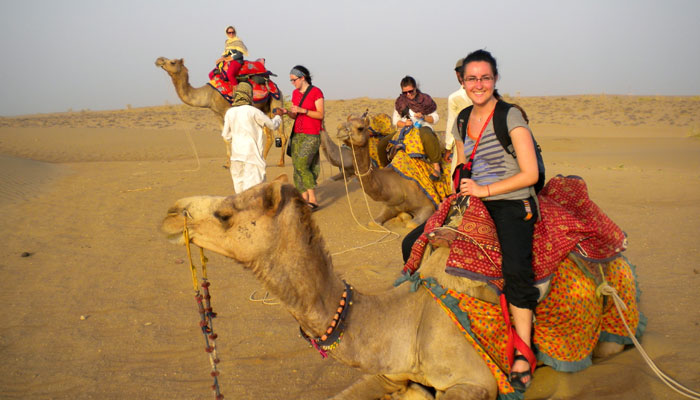
You can see Rajasthan on a jeep safari. Or, if you’ve a penchant for the high life, aboard the Palace on Wheels, Rajasthan’s luxury train. But to really get a hands-on feel of the desert state, there’s no beating a camel safari. Clamber up on one of these seemingly ungainly beasts, hang on for dear life, and let the good times roll- literally, for the Ship of the Desert walks in a way which would certainly remind any sailor of a rolling, pitching deck in turbulent waters!
When to go
Most camel safaris are organised in the winter, when the weather’s Camel Safari, India Holiday toursgood. Rajasthan’s summers are almost unbearably hot and dry, so going on a camel safari during this time is virtually impossible. November to March, when days are cool (and nights cold!) is when most camel safaris are organised.
What to bring
You’ll almost certainly be doing your camel safari in the winter, when woollens are a necessary part of your packing. Desert nights, especially, can get very cold, so it’s essential to take along plenty of warm sweaters and jackets when on a camel safari. Although mattresses are usually provided by whoever’s organising the camel safari, you’ll need to carry bedding- a warm sleeping bag is recommended, and an additional blanket or two can always be used.
During the daytime, the sun can be blistering, so make sure you’ve got along your sun hat, a pair of sun glasses, and suntan lotion. Carry a first aid kit along with you, as well as any other essentials you might need- out there in the desert, trying to find a shop which will sell you your favourite brand of soap can be a problem.
It’s a good idea to carry along extra blankets to cover the wooden saddle which you’ll probably be sitting on. Blankets are excellent padding, and can protect you from a sore bottom after a hard day’s riding.
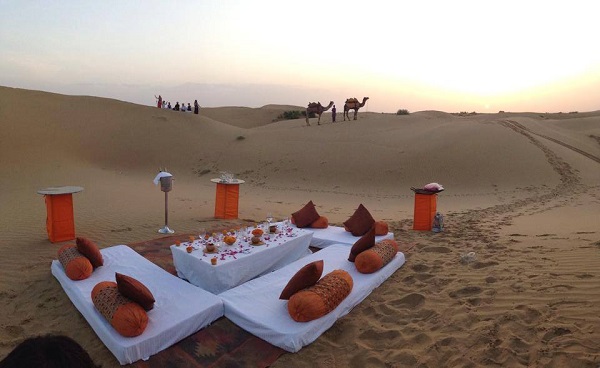
Getting there Camel Safari, India Holiday tours
Most camel safaris start from Jaisalmer, which is connected by air, train and road to the rest of India. Rajasthan’s capital, Jaipur, is also a convenient base for exploring the state, whether on camel or otherwise. Jaipur has a well-connected airport, as well as regular train and bus links to a number of cities across India. All camel-safari towns in Rajasthan, such as Bikaner and Mandawa, are connected by road to Jaipur. Buses run between all the major towns of the state, and private cars or taxis can be hired to do the trip.
Do’s and don’ts
It’s important to check, when you’re booking a place on a camel safari, what is included in the price you’re paying. Find out what arrangements are being made for accommodation, food and drink and other essentials. In some camel safaris, mineral water is not a part of the package, in which case you’ll have to bring your own. Find out for sure what you’re getting before you book.
When you do start on the camel safari, keep a few things in mind. Remember that you’re travelling through the desert- it’s dry, and if you’re not careful, you could get dehydrated. Drink plenty of water- at least 2 to 4 litres a day- and keep yourself well covered, to prevent sunburn. Wear a sunhat and sun glasses and slap on the suntan lotion if you don’t want your skin to start peeling.
Rajasthan, although it’s fast getting as commercialised as any other part of India, still is pretty unspoilt- especially as far as the desert is concerned. Keep it that way; please don’t leave a trail of junk behind you or harm the ecology and culture of this beautiful region.
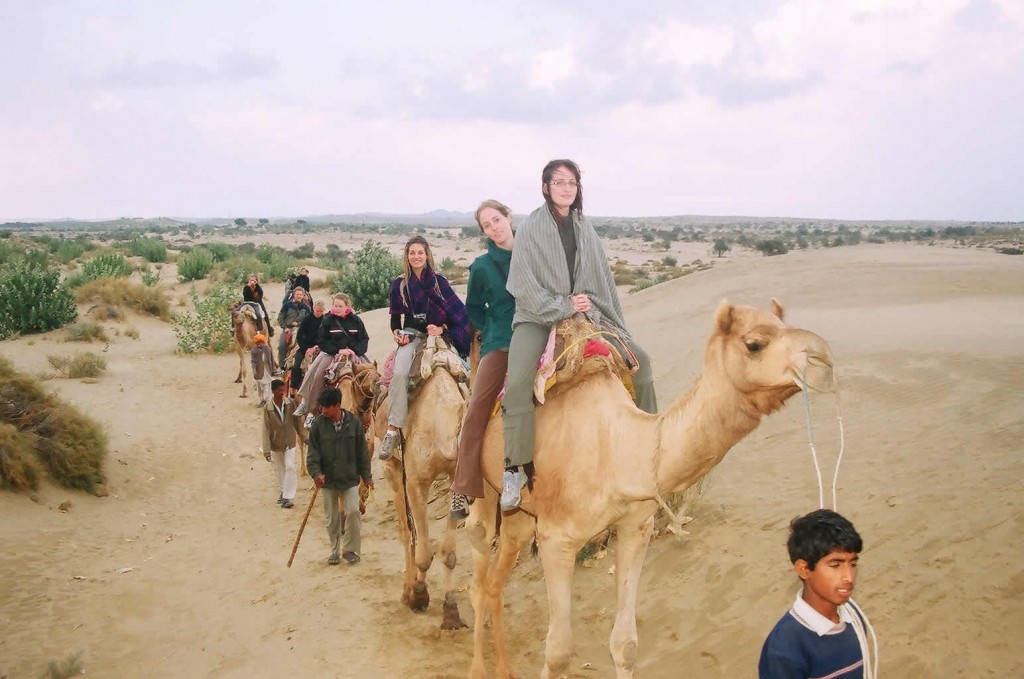
Fundamental facts
Camel Safari, India Holiday tours A large number of travel agents and tour operators in Rajasthan organise camel safaris. Most of these are in the vicinity of Jaisalmer, Bikaner, Osian and Khimsar, and stretch from anywhere between 2 to 7 days, with longer ones of up to a month. Shorter, day-long camel safaris which just about give you a glimpse of the desert are also organised. The majority of camel safaris start from the desert fort town of Jaisalmer.
In most cases, one camel is provided per person, and a camel cart accompanies the entourage, laden with food, utensils and other supplies; it’s also an option for anyone who gets sick of sitting on a lurching camel. Tents, food, mineral water, mattresses and an escort are invariably provided, and most operators will also make sure you get a full dose of local entertainment in the evenings. For longer camel safaris, which cover a few days, camps are usually set up at night in the vicinity of villages.

